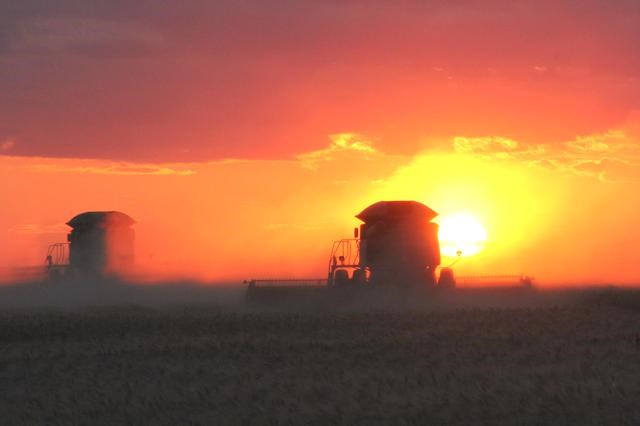Crops in southeast Saskatchewan are suffering from heat stress along with infestations of grasshoppers, along with a lack of moisture.
There have been scattered thundershowers, such as one that came through the Weyburn area on Saturday morning, bringing varying levels of moisture to land in the region.
Crop damage will be greatest in any fields that are flowering or are sandier in texture. Damage during the flowering stage will result in reduced yield potential and quality, and stress from the lack of moisture and heat is becoming more apparent with the lower leaves of the crop drying out as the plant uses moisture within itself to survive.
Crops in the southeast region are rated as poor to good, with 70 per cent of fall cereals, 75 per cent of spring cereals, 77 per cent of oilseeds and 71 per cent of pulse crops in their normal stages of development.
Fillmore producer Russ Leguee noted, “Crops are under heat stress for sure. Moisture conditions are dry. We were fortunate that we received a couple of rains in June, as many others didn’t. Grasshopper infestation has become a problem and we are spraying to control them.”
He added that yield potential is falling, but crop prices remain strong so they are still optimistic about how well their crops will do this year.
“Harvest will come on quickly if the weather pattern doesn’t change,” said Leguee.
From the thundershowers on Saturday morning, he said they did receive some rain and added, “Every bit helps. I have heard some area have received a significant amount, and that will help a lot.”
Prior to the weekend, the Weyburn area had reported 25 mm of rain, the RM of Wellington had 14 mm, and rainfall ranged from 7 to 31.5 mm in the RM of Francis, with the Radville area receiving between 25 and 29 mm of rain.
Topsoil moisture conditions continued to slightly deteriorate with the heat. Cropland topsoil moisture is rated as 33 per cent adequate, 45 per cent short and 22 per cent very short.
Hay and pasture land topsoil moisture is rated as 12 per cent adequate, 48 per cent short and 40 per cent very short.
Haying is well underway in the southeast region, with 27 per cent of the hay crop cut and 28 per cent baled or put into silage. Hay quality is rated as nine per cent excellent, 59 per cent good, and 27 per cent fair. Some producers are seeing an average hay crop while others in drier area are seeing hay yields far lower than average.
Pastures that have not received rain recently are expected to experience a reduction in their carrying capacity and many producers are hauling water to livestock as sloughs and dugouts dry up.
Crop damage this past week is due to lack of moisture, strong winds, heat, gophers and grasshoppers. Some producers have been spraying pulse crops and hay stands for grasshoppers.




